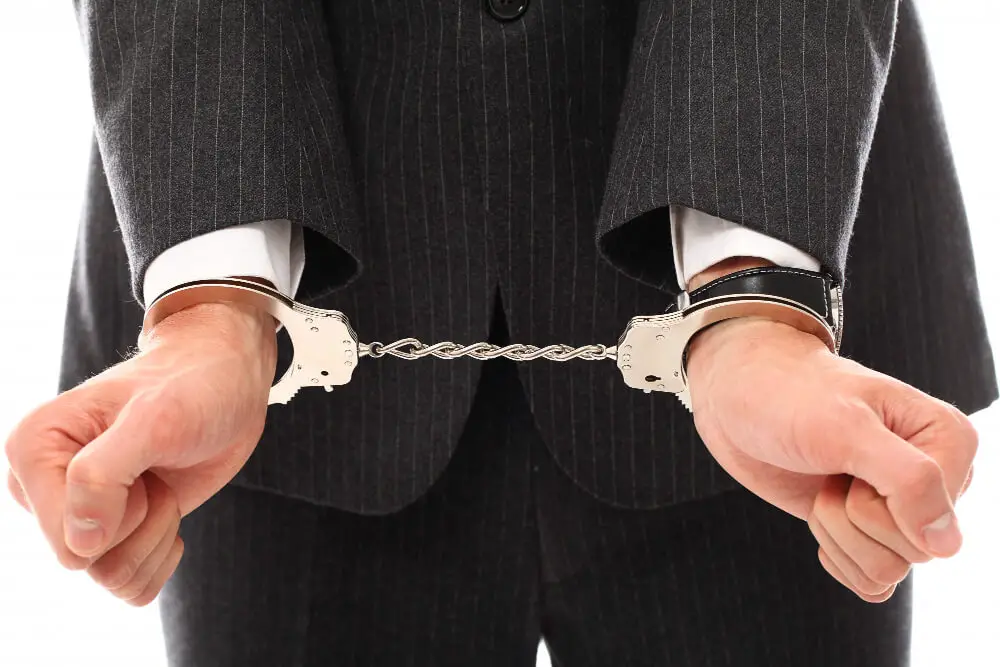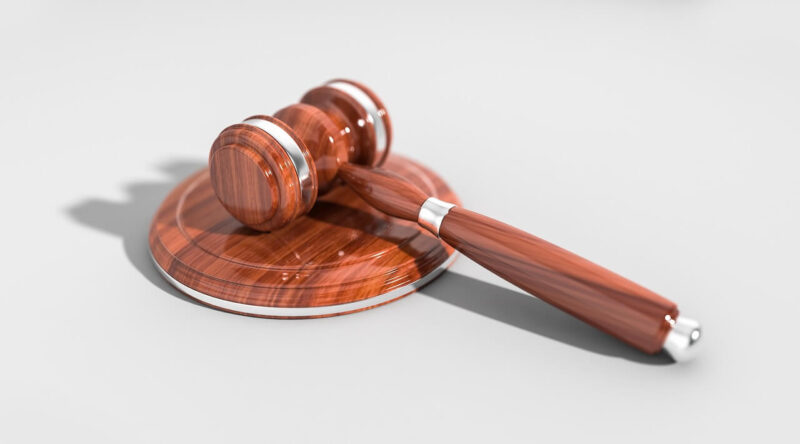In the world of the criminal justice system, “bail” and “bond” are often mixed up. This can confuse people who don’t know the legal meanings behind them. Learning the difference between these two important terms can help you feel more confident when dealing with the legal system.
Key Takeaways
- Bail and bond are separate legal concepts, each with its own purpose and requirements.
- Bail involves the temporary release of a defendant from custody, often with conditions, while bond is a financial guarantee to ensure the defendant’s appearance in court.
- The bail process and the bond process differ in their procedures and the parties involved.
- Factors such as the severity of the alleged crime and the defendant’s flight risk can influence the amounts set for bail and bond.
- Understanding the nuances between bail and bond can help individuals navigate the criminal justice system more effectively.
What is Bail?

Bail is a financial guarantee, usually in cash or property, that a defendant gives to the court. This lets them go free while they wait for their trial. The bail definition is about a refundable deposit that ensures the defendant shows up in court.
Purpose of Bail
The main purpose of bail is to make sure defendants show up in court. The court asks for money to motivate them. This way, defendants are more likely to return for their trial, avoiding losing the bail money by running away.
This system balances the idea that someone is innocent until proven guilty. It also helps keep the court running smoothly and keeps everyone safe.
- Ensuring Defendant Appearance: Bail acts as a financial promise that the defendant will show up in court. This stops them from skipping town and avoiding justice.
- Maintaining Public Safety: Bail reduces the chance of a defendant committing more crimes or being a danger to the community while they wait for trial.
- Upholding the Judicial Process: By making sure the defendant is there, bail lets the court move forward with the case efficiently.
In summary, bail is key in the criminal justice system. It balances the rights of the accused with the need for safety and justice to be served well.
What is a Bond?

In the criminal justice system, a bond is key but different from bail. It’s a promise to the court by the defendant to show up for court dates. There are different types, like surety bonds where someone else pays if the defendant doesn’t show up. Or personal recognizance bonds, where the defendant promises to appear on their own.
Definition of Bond
A bond is a legal promise to the court that the defendant will show up for all court hearings. It’s usually backed by money or something of value to make sure the defendant keeps their promise.
Types of Bonds
- Surety Bond: This bond has a third party, like a bail bondsman, who promises to pay if the defendant doesn’t show up.
- Personal Recognizance Bond: Here, the defendant promises to appear without needing to pay money or use collateral.
- Property Bond: The defendant or someone else uses valuable property as collateral to secure the bond.
- Cash Bond: This bond requires the defendant or someone else to pay the full amount upfront. It’s returned if the defendant shows up in court.
The court decides what kind of bond to use and how much it will be. This depends on the crime and how likely the defendant is to run away.
Key Differences Between Bail and Bond
In the criminal justice system, “bail” and “bond” are often mixed up. But they mean different things. Knowing the difference is key for those dealing with the law.
The main difference is in the money side. Bail means the defendant pays a certain amount or offers collateral. This money is given back if they show up for court. On the other hand, bonds involve a third person, like a bail bondsman. They promise the defendant will show up in court for a fee that can’t be gotten back.
- Bail is paid directly by the defendant, while a bond is a deal between the court and a third party, like a bail bondsman.
- Bail money is returned if the defendant meets their court duties. But the bond fee to the bondsman is not refundable.
- The court sets bail amounts based on the crime’s severity and the defendant’s risk of flight. Bond fees are usually a percentage of the bail amount.
It’s important to know the difference between bail and bond for defendants and their families. Choosing between bail vs bond can affect money and legal issues. It’s vital to think about these options carefully.
The Bail Process
The bail process is key in the criminal justice system. It lets people facing charges get out of jail while they wait for trial. This step includes a bail hearing. Here, a judge decides how much bail to set based on different factors.
Bail Requirements
Bail needs can change a lot, depending on the case. Things like the crime’s severity, the defendant’s risk of flight, and their money situation matter. The defendant must pay the bail amount set by the judge. This money is kept by the court until the case ends.
Bail Hearing
The bail hearing is very important. At this time, the judge looks at many things to figure out the bail amount. They might check the defendant’s past crimes, the crime they’re accused of, and if they might run away or harm others.
The result of the bail hearing can really affect if the defendant can get out of jail. It also helps them get ready for their defense. Knowing about the bail process and what’s needed is very important for those charged with crimes and their lawyers.
The Bond Process
The bond process is different from bail. It involves a third-party, like a bail bondsman, who pays the bail if the defendant doesn’t show up. The defendant pays a fee, usually 10% of the bail, to the bondsman for their release.
The bond process has several steps:
- The defendant or their representative finds a bail bondsman and shares the bail amount and personal details.
- The bondsman checks the case and sets the fee, which is often 10% of the bail.
- The defendant pays the non-refundable fee to the bondsman.
- The bondsman posts a bond with the court, promising to pay the full bail if the defendant doesn’t show up.
- The court lets the defendant go, and they must attend all court dates.
If the defendant shows up for court, the bond is cleared, and the bondsman is released. But if the defendant doesn’t show, the bondsman must pay the full bail amount to the court.
| Bail Process | Bond Process |
|---|---|
| The defendant or their representative pays the full bail amount directly to the court. | The defendant or their representative pays a non-refundable fee, usually 10% of the total bail amount, to a bail bondsman. |
| The defendant is released from custody upon posting the full bail amount. | The bail bondsman posts a bond with the court, guaranteeing the full bail amount if the defendant fails to appear. |
| The full bail amount is refunded to the defendant if they appear as required. | The 10% fee paid to the bail bondsman is non-refundable, even if the defendant appears as required. |
Knowing the bond process is key for defendants and their reps in the criminal justice system. By using a bail bondsman, defendants can get out of jail while the bondsman takes on the risk of the bail amount.
Factors Influencing Bail and Bond Amounts
When setting bail or bond amounts, courts look at several important factors. The severity of the alleged crime and the defendant’s flight risk are key. These help determine the amount needed.
Severity of the Alleged Crime
The charges’ severity affects the bail or bond amount. Violent crimes like assault or robbery lead to higher amounts. This is because the court wants to ensure the defendant shows up for trial and doesn’t harm public safety.
Flight Risk Assessment
The court also checks if the defendant might flee before trial. They look at the defendant’s criminal history, job, community ties, and money. Those seen as a higher flight risk face higher bail or bond amounts.
By weighing the crime’s severity and the defendant’s flight risk, courts aim to balance safety, rights, and justice. This ensures fairness and public safety.
difference between bail and bond
When someone is arrested, they might need to post bail or bond to get out. The terms “bail” and “bond” are often mixed up, but they’re not the same. The main difference is in how you pay for it.
Bail is money or property given to the court to ensure the defendant shows up for court. This money is returned if the defendant appears as promised. A bond, however, involves a third party, like a bail bondsman. They pay the bail for the defendant for a fee, usually 10-15% of the bail amount.
Who chooses bail or bond depends on their money situation. If someone can pay the full bail, they might choose bail. But if they can’t afford it, a bond with a smaller fee might be better.
Factors Considered in Bail and Bond Decisions
Judges look at several things when deciding on bail or bond. They consider the crime’s severity, the defendant’s risk of fleeing, and their connection to the community. They aim to make sure the defendant shows up in court while keeping everyone safe.
The key difference between bail and bond is the money aspect and if it’s refundable. Knowing this can help defendants choose the best option for their case.
Consequences of Missing Bail or Bond Payments
Missing a court date or failing to pay bail can lead to serious legal issues. If someone misses a court date, a bench warrant for their arrest can be issued. The bail or bond amount may also be lost. For bonds, the bail bondsman could have to pay the full bail amount to the court.
Missing bail or bond payments can cause more legal problems. Those who don’t meet their court obligations might face new charges. These could include failure to appear or bond forfeiture. Such charges can lead to fines, longer jail time, or even losing their bail or bond.
- Bench warrant issued for arrest
- Bail or bond amount forfeited
- Bail bondsman required to pay full bail amount
- Additional charges for failure to appear or bond forfeiture
- Fines, extended jail time, or revocation of release
The effects of missing bail or bond payments can be severe. It’s important for individuals to know their duties and fulfill all court orders. This way, they can avoid these serious outcomes.
Bail and Bond in Different States
The rules for bail and bond change a lot from state to state. Each place has its own rules for setting bail or bond amounts. It’s key for defendants and their lawyers to know these rules to get a fair trial.
In some places, getting bail can be tough. Other states might offer different options, like personal recognizance bonds. These options can give defendants more freedom. Also, how bail or bond amounts are decided can vary a lot.
Understanding these differences can be hard. But, knowing the local rules is very important. Getting help from skilled lawyers can make a big difference. They can help defendants make smart choices and protect their rights.
FAQ
What is Bail?
What is a Bond?
What are the key differences between Bail and Bond?
What is the Bail Process?
What is the Bond Process?
What factors influence Bail and Bond Amounts?
What are the consequences of missing Bail or Bond payments?
How do Bail and Bond requirements differ across different states?
Image Credits
Featured Image By – Image by Arek Socha from Pixabay
Image 1 By – Image by Racool_studio on Freepik
Image 2 By – Image by kjpargeter on Freepik








